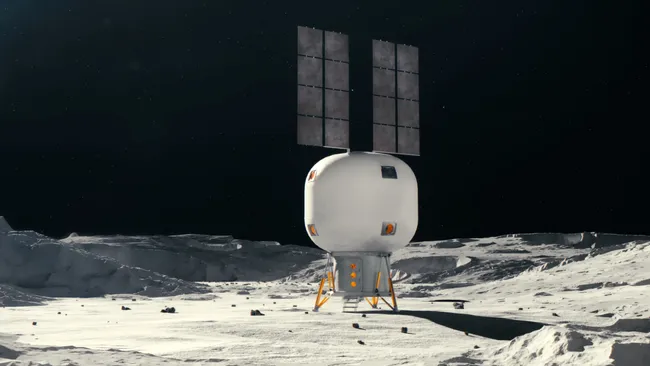HUMANS could live on the Moon and on Mars in “stadium-sized” space habitats set to launch into the Earth’s orbit as soon as 2026.
The incredible expandable space bases are compressed to fit inside rockets and increase in size when deployed in space.
Space startup Max Space is looking to launch the habitats into Earth‘s orbit on board a SpaceX rocket – to inflate in size after deployment.
The bases are a cheaper alternative to traditional “tin can” module designs, which consist of small modules connected to each other.
Max Space co-founder Aaron Kemmer said: “The problem with space today is, there isn’t enough habitable space in space.
“Unless we make usable space in space a lot less expensive, and much larger, humanity’s future in space will remain limited.”
Read more on space bases
The startup is planning to launch a 700 cubic feet prototype in 2026, followed by a 3,531 cubic feet module in 2027, and a massive 35,314 cubic feet module by 2030.
Larger variants could be sent into space after the initial inflatable space bases are launched – as there is said to be no theoretical limit to the modules’ scalability.
Max Space said the habitats would be able to float in the micro-gravity of orbit and be deployed on the surface of the Moon or Mars.
Mr Kemmer said: “My dream is to have a city on the Moon before I die.
Most read in Tech
“So I look at this like, this is going to be the habitat, the structures, that are going to go inside the lava tubes buried under the [lunar] surface.”
Customers who might be interested in visiting the habitats range from pharmaceutical companies to commercial space stations, or even movie studios looking to film in orbit.
There are currently three inflatable space habitat modules orbiting the Earth, all of which were developed and built by American space design and manufacturing company Bigelow Aerospace.
Max Space is hoping to launch a test module roughly the size of two suitcases, which expands into a base of 700 cubic feet, in just two years, according to Space.com.
The prototype would be much larger than all of the three inflatable habitats currently orbiting the Earth.
Kemmer’s new startup has already built a full-size prototype for the first flight, which is now being used for ground testing.
And it has started manufacturing the flight vehicle.
Max Space’s exciting plans for a range of inflatable space habitats were unveiled last week at the 39th Space Symposium.











